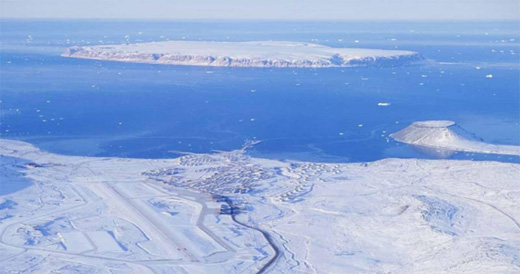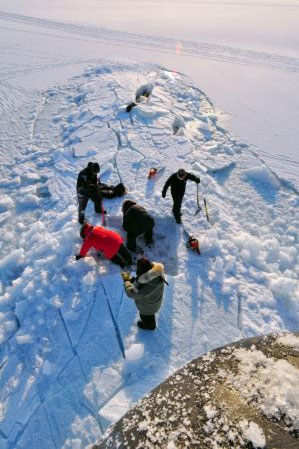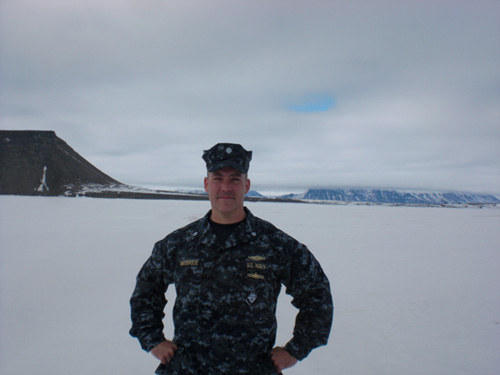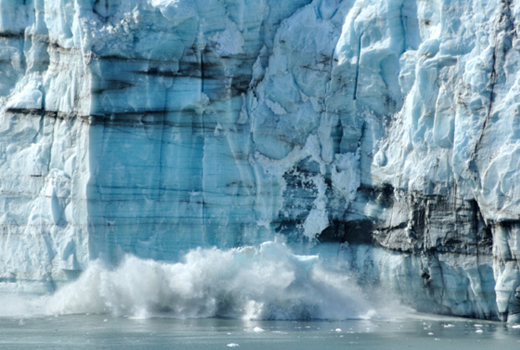Task Force Climate Change Climate Skepticism & Ways Forward
Climate skepticism is a good thing. Really. We should all question what we think we know and seek to refine our understanding of the truth. Skepticism is the very foundation of scientific inquiry, and climatology is a science, not a religious dogma or political tenet. I don’t accept every new idea I come across at face value. I determine the level of my acceptance of new ideas based upon the weight of the evidence that supports them, which is the foundation of scientific analysis. Consequently, true climate skeptics are rare and, I would propose, largely found within the scientific community.
Part of the scientific process is to question assumptions, challenge the work of colleagues, engage in heated debates and continuously strive to arrive at ground-truth. Because of this, science is self-correcting, meaning that vigorous debate, constant questioning and continuous research will ultimately lead to a better understanding of the nature of our world.
Last spring the United States witnessed some very extreme weather. Amidst severe events like the tornadoes that hit the South and Midwest, the wild fires that ravaged portions of the Southwest and the devastation of the Mississippi floods, the inevitable debate arose on the complicity of global warming.
This debate is often fueled by a misunderstanding of the distinction between climatology and meteorology. Applied meteorology assesses current weather conditions, determines what factors are influencing it and tries to predict what will come next. Climatology, on the other hand, assesses long-term trends to evaluate the state of the climate. Therein lies the problem. How can one be sure that what he/she is observing is part of a climatic trend unless it can be placed in the context of long-term changes?
Imagine standing on a beach and watching a single wave rush up onto the sand. Is the tide coming in or going out? There is no way to answer this question with a single observation or even just a few. Continue to watch the waves, and you will notice that some advance ahead of your first observation, and some fall behind it. But watch the waves for an hour, and you can see the trend and say with some confidence what the tide is doing. It’s the same way with climate change, only the hour converts to decades.
So, are the extreme weather events people are seeing today products of global climate change? The answer lies with the definition of “extreme,” which may be defined as “extending far beyond the norm.” When a 100-year flood happens twice in a decade – or even in a season, as occurred this year in the Midwest – then what was once “extreme” is now becoming more common. In other words, the climate (the average weather) is changing. Yet the analysis is not that simple. There are other potential large-scale contributing factors, like the El Niño Southern Oscillation and the effects of human development on the landscape, where large cities become heat islands and erosion causes less water to be absorbed by the ground and more to flow into riverine surges.
Twenty years from now people may be able to look back at 2011 and say these weather extremes were part of a new normal, the early indicators that climate was changing in dramatic ways. For most climate scientists, an expectation exists that global warming will incite more extreme weather events. Weather is ultimately a result of the atmosphere’s dispersion of solar heat from tropical regions to the Poles. Add more heat to the system, and the assumption is that weather will behave more energetically and perhaps more erratically. From that perspective, the extreme weather events of recent years are what one would expect from a warming planet.

Photo by Sgt. Craig Anderson | A U.S. Army Sherpa cruises 5,000 feet above the Brooks Range 600 miles north of the Arctic Circle at Anaktuvuk Pass.
There are legitimate reasons to believe the climate is warming. Observational evidence of global temperature increases in the atmosphere and ocean, rising sea levels, melting sea ice and retreating glaciers, and poleward migrations of plant and animal biomes support that contention.
There are also legitimate reasons to attribute those changes to human use of fossil fuels. The role of greenhouse gases in Earth’s heat budget is well understood and modeled. The immense release of carbon dioxide into the atmosphere by industrial processes and automobiles has been measured and is constantly monitored. Considering the amount of fossil fuels burned every day around the world, it would be more surprising if it did not have a serious impact on the climate system.
The problem with climate change is that it is very complex, and while evidence continues to accrue detractors can, and do, pick data points out of context to challenge the entire premise. Moreover, while there is a large consensus in the scientific world that the climate is changing due primarily to human use of hydrocarbons, many uncertainties exist in the timing and severity of the changes.
Unfortunately, the issue of global climate change has become politicized. Heated debate rages on, not with skeptics but with political partisans. On one extreme, some people are inclined to challenge every bit of data that supports climate change. And they believe, rather illogically, that scientists who believe in human-induced climate change are part of some conspiracy. On the opposite extreme, others maintain an apocalyptic view of climate change and attribute every extreme weather event to global warming. In the middle are the skeptics, who stay focused on what is known, and who strive to learn more about what is not known.
This brings about a legitimate question. Will scientific objectivity keep people from actively working to mitigate the effects of greenhouse gasses and to adapt to changing conditions? If the culprit behind climate change is hydrocarbons placed in the atmosphere, then shouldn’t everyone try to wean themselves from it? Moreover, hydrocarbons extracted from the ground are not renewable and much of the supply comes from outside the U.S., which makes this country dependent on others for its vital energy supply.
The irony is there are many good reasons to break America’s reliance on hydrocarbons. As the thirst for oil, gas and coal grows in the developing world, competition for existing fossil fuel resources will inevitably drive prices up. The U.S. has already tapped the reserves that are easy to acquire. Drilling in deep water, or in frozen Polar Regions, will be much more expensive and those prices reflected at the pump. Moreover, increased production is a short-term fix since fossil fuels are not a renewable resource.
For the Department of the Navy, all this boils down to one question: Will a changing climate impact future operational readiness? When considering potential threats, military organizations do not have the luxury to wait until all the evidence is in. They must be prepared for any eventuality, and that means assessing available information and conducting prudent planning in order to ensure military readiness.
A Cooperative Strategy for 21st Century Seapower, www.navy.mil/maritime/MaritimeStrategy.pdf, a national maritime strategy signed by the top leadership of the U.S. Navy, Marine Corps and Coast Guard in 2007, acknowledged global climate change as a legitimate threat to national security. The 2010 Quadrennial Defense Review, a legislatively mandated review that guides defense strategies and policies, similarly acknowledged this concern. Additional studies conducted by the National Research Council, the National Intelligence Council, the Center for Naval Analysis, and other think-tanks, have also supported these facts.

Courtesy Photo: U.S. Army Corps of Engineers | Aerial image of Thule Air Base, Greenland.
In 2009, the Chief of Naval Operations established the Navy’s Task Force Climate Change to evaluate the implications of climate change on national security and naval operations. The ultimate goal is to ensure the U.S. Navy is ready and capable to meet all mission requirements in the 21st century. The Task Force has evaluated the available science and believes global climate change will impact future naval operations. Their assessment is based on the available evidence and an understanding of atmospheric physics.
The most compelling evidence of climate change can be found in the Arctic. Although the region is remote and observational data has been sparse, there has been a discernable trend monitored since satellite observations of the Polar Region first began in 1979 – the loss of sea ice.
Ice and snow exist relatively close to their melting point, and the transition between the solid and liquid states of water is a very visual indicator of warming trends in Polar Regions. Diminished summer sea ice in the Arctic is very apparent in satellite imagery since 1979, with an average 11.2 percent decline per decade.
But satellite imagery of ice extent only provides a two-dimensional view. Starting in the 1990s, U.S. Navy submarines began reporting a surprising loss of thickness in the Arctic sea ice. Other measurements by sensors in the Arctic confirmed this, but these measurements were localized. It wasn’t until 2004 that satellite altimetry data was capable of providing volumetric measurements over the entire Arctic basin. In 2009 a joint project by the National Aeronautics and Space Administration (NASA) and the University of Washington’s Applied Physics Lab (APL) evaluated data from NASA’s Ice, Cloud and Land Elevation Satellite (ICESat) between 2004 and 2008, and reported an average loss of 2.2 feet in thickness, or a 42 percent loss, in overall ice volume.
Although ICESat has been decommissioned, the recently operational European Space Agency satellite CryoSat-2 has begun to fill the data void. This data, and others, are fed into an APL-developed computer model that incorporates verified ice volume measurement and applies a wide range of physical parameters to estimate overall volume. Known as the Pan-Arctic Ice Ocean Modeling and Assimilation System (PIOMAS), it has judged September 2010 as the lowest Arctic sea ice volume on record.
Each autumn the Arctic Ocean begins to freeze over and by winter the majority of water is covered in ice. As the climate begins its annual warming in the spring, thin single-year ice quickly melts, leaving large areas of open water. While ice tends to reflect incoming solar rays back into space before it can be converted into heat energy, the darker open waters absorb heat, warming water and increasing ice melt. Of course even thick ice will seasonally melt, although not enough to create open waters. But thin, single-year ice will melt away each summer.
Since the Arctic is primarily a maritime domain and the U.S. has extensive territorial and exclusive economic zone waters along Alaska’s Arctic coastline, the Navy has a strong interest in it. The seasonal opening of Arctic waters has the potential to allow oil, gas and mineral exploration, maritime shipping, commercial fishing and tourism.

Photo by Petty Officer 1st Class Tiffini Jones Vanderwyst | Members of the Applied Physics Laboratory Ice Station clear ice from the hatch of the Los Angeles-class submarine USS Annapolis after the sub broke through the ice while participating in Ice Exercise 2009 in the Arctic Ocean. Annapolis and the Los Angeles-class attack submarine USS Helena are participating in ICEX to operate and train in the challenging and unique environment that characterizes the Arctic region.
All evidence suggests that differences over sovereignty claims by the Arctic nations will be adjudicated through diplomatic means under the United Nations Convention of the Law of the Sea. While the United States has not formally acceded to the Convention, it does comply with provisions governing traditional uses of oceans. In addition, the U.S. is a member of the Arctic Council, an intergovernmental forum for the eight Arctic nations. Last May the Arctic Council completed a search and rescue agreement that focuses on coordination, cooperation and defined areas of responsibility. Secretary of State Hillary Clinton signed the agreement for the U.S., an indicator of its diplomatic importance to the Obama Administration.
For the navies of the various Arctic nations, the mere ability to protect their national interests means they must be prepared to operate in this challenging environment. That is no easy task. While the Arctic climate may be modifying, it will remain a remote and inhospitable region with limited infrastructure to support military operations for the foreseeable future.
At this point, the U.S. Navy has not been assigned a specific mission in the Arctic, but it has a responsibility to be able to operate there if called upon. And it has a responsibility to ensure any operations in that harsh region are conducted safely. The only routine operations the Navy has had in the Arctic have been conducted by nuclear powered submarines, which began patrolling under the ice for extended periods in the 1950s.
If the Navy is called upon to operate in the Arctic, what will the mission be? Will the U.S. need a year-round or seasonal presence? Will it need a military base on the northern Alaska coast or a naval mission in Thule Air Base in Greenland? How will the very cold conditions affect exposed sensor and weapon systems?
Fortunately, the U.S. has time to proceed in a cautious, deliberate manner. The consensus of scientific opinion is that it will be another 25 years or so before the Arctic experiences at least four weeks of relatively ice-free conditions. In November 2009, the Navy released its Arctic Roadmap to guide the development of policy, to help determine what actions need to be taken and to inform potential investment decisions. Through the execution of the Roadmap, which includes studies, assessments and table-top exercises, the Navy is trying to better understand what U.S. future requirements will be, and what capabilities it will need.
Changes happening in the Arctic herald changes that will be happening around the globe, and the Navy is aware of and preparing for these changes. One significant example is sea level rise. Since the majority of naval bases are located in coastal areas, even a few feet of sea level rise could cause problems. But enhanced storm surges and salt water intrusion into coastal aquifers will cause greater problems. Sea level rise is a complicated mix of meteorology, geology and physics, and it will not be uniform around the world. For Hampton Roads in Virginia, the Nation’s largest naval complex, increases in sea level will act in concert with a slowly sinking land mass, which will enhance the impact of coastal inundation a great deal over time. The Department of Defense is currently conducting a multi-year, multi-disciplinary study to determine the vulnerabilities of coastal infrastructure throughout the military services.
The Quadrennial Defense Review acknowledged that global climate change will increase instability in vulnerable regions of the world and will ultimately impact both the peace-keeping and disaster response missions that keep the military services busy. Increasingly, strategic exercises and conceptual thinking are incorporating the environment as a major player in geopolitical constructs.
During this century the world will face serious challenges from climate change, but those changes will likely happen slowly and will impact societies disproportionately. Throughout history humans have demonstrated a remarkable ability to adapt. There is time to adapt to climate challenges, but adaptation is neither easy nor inexpensive. Climate change will affect U.S. coastal infrastructures, food production, health and security. It will interact with, and exacerbate, challenges to sustainability due to Earth’s rapidly expanding population and the spread of advanced technology. Its effects will be amplified by globalization of markets and expansion of global communications.
It has been said that humans have adapted their way into this climate change problem through their own cleverness via technological innovation. Isn’t it terribly cynical to insist that humans are unable to adapt their way back out of it? Earth’s changing climate and how the Nation responds to it needs to be part of a national discussion based on legitimate science. While some are more convinced of the threat that climate change poses, it is clear that neither a denial of the science nor an exaggeration of the challenges the U.S. faces will be productive to its way forward.

Photo Credit: U.S. Navy | Cmdr. Blake McBride during a site visit to Thule Air Base in northern Greenland. At 695 miles north of the Arctic Circle, Thule is the only U.S. military installation in the Arctic.





























